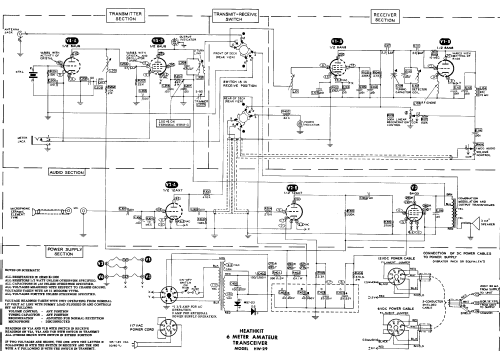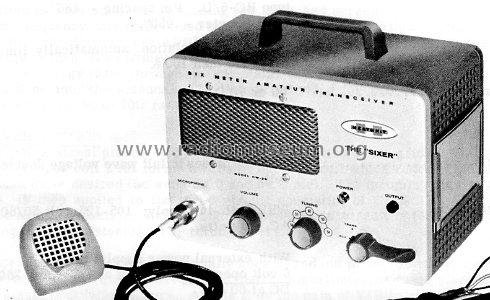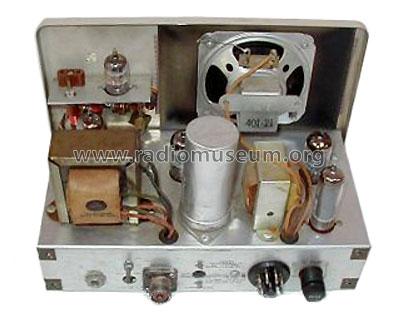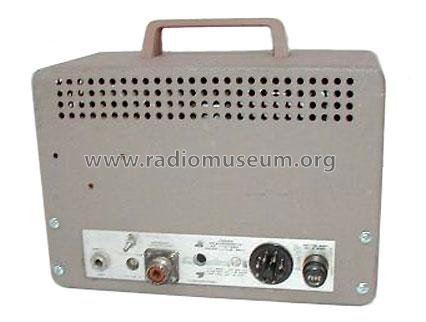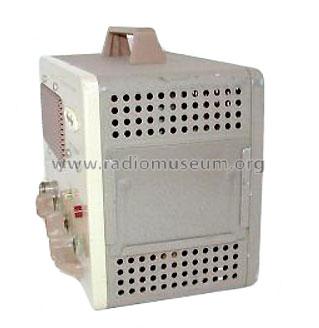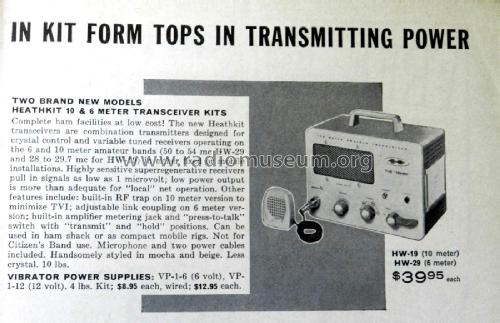The "Sixer"; "Benton Harbor Lunch Box" HW-29 4 tubes
Heathkit (Brand), Heath Co.; Benton Harbor (MI)
- Country
- United States of America (USA)
- Manufacturer / Brand
- Heathkit (Brand), Heath Co.; Benton Harbor (MI)
- Year
- 1960
- Category
- Amateur TRX: Transmitter/Receiver (and Transceiver)
- Radiomuseum.org ID
- 165309
-
- alternative name: Heath Company
Click on the schematic thumbnail to request the schematic as a free document.
- Number of Tubes
- 4
- Main principle
- Transceiver; 2 AF stage(s); Super Regenerativ
- Tuned circuits
- 1 AM circuit(s)
- Wave bands
- VHF incl. FM and/or UHF (see notes for details)
- Power type and voltage
- Alternating Current supply (AC) / 105; 125 Volt
- Loudspeaker
- Permanent Magnet Dynamic (PDyn) Loudspeaker (moving coil) / Ø 3.5 inch = 8.9 cm
- Power out
- 1 W (unknown quality)
- Material
- Metal case
- from Radiomuseum.org
- Model: The "Sixer"; "Benton Harbor Lunch Box" HW-29 [4 tubes] - Heathkit Brand, Heath Co.;
- Shape
- Tablemodel without push buttons, Mantel/Midget/Compact up to 14
- Dimensions (WHD)
- 9.75 x 8 x 6 inch / 248 x 203 x 152 mm
- Notes
-
6 meter (50 - 54 MHz) AM transceiver with 4 tubes. Predecessor of the 5 tube HW-29A.
- Net weight (2.2 lb = 1 kg)
- 6 lb 5 oz (6.313 lb) / 2.866 kg
- Price in first year of sale
- 39.95 USD
- Source of data
- - - Manufacturers Literature
- Mentioned in
- Heathkit: A Guide to Amateur Radio Products (2nd ed., p. 164)
- Author
- Model page created by Antonio Barros-Regada. See "Data change" for further contributors.
- Other Models
-
Here you find 715 models, 699 with images and 506 with schematics for wireless sets etc. In French: TSF for Télégraphie sans fil.
All listed radios etc. from Heathkit (Brand), Heath Co.; Benton Harbor (MI)
Forum contributions about this model: Heathkit Brand,: The "Sixer"; "Benton Harbor Lunch Box" HW-29
Threads: 1 | Posts: 1
The HW-29 was first advertised in CQ magazine in April 1960. By November of 1960, Heath advertised the HW-29A and also an upgrade for the HW-29. Heath had used 5th overtone crystals in the HW-29 which had proved troublesome. For the HW-29A, they added a multiplier stage which required one addtional tube for doubling and tripling the commonly available 8 MHz surplus crystals to 6 meters.
Rich Post, 15.Jun.21
